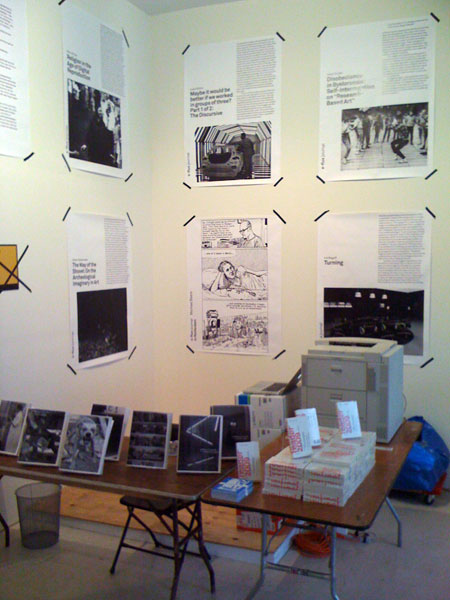e-flux Journal Layout Generator
Starting this week, the output from the Layout Generator I built for the e-flux Journal is out in the wild. (You can browse through some articles and click “Download PDF” to see them.) This has been an exciting foray into generative work for me.
The Layout Generator is an automated system to turn blog-like, long-scrolling-column HTML into rich, print-ready PDFs with more a varied visual depth and flow. The actual forms of the layouts—where images appear, how they interact with the running flow of text, etc.—are determined by a combination of some simple heuristics along with markup cues which enable non-designers to create compelling layouts. Here’s a short example article which demonstrates just a few of the typographic and layout possibilities.

e-flux’s booth at Printed Matter’s NY ART BOOK FAIR, October 2009. The poster-sized layouts were designed by hand, but the journals themselves were largely computer-generated.
This project proposed a solid methodology for generative work (be it in design, music, etc.): first take a hand-crafted sample artifact (in this case, Jeff Ramsey’s designs); analyze and articulate the intuitive process behind it; then write that out in systemic code. We had to tease out Jeff’s aesthetic decision-making process in meetings in order to systemize it. Yes, it feels a bit like the Taylorization of intellectual production: you must train the robot that will replace you (or at least train the engineer building it).
In its current state, the system is about 1k lines of Ruby, using Prawn for PDF writing, along with a whole slew of other RubyGems from Hpricot to Sinatra. I’m hoping to grow this as we implement more of Jeff’s designs and possibly concoct a few new ones by accident.
Thanks go to Anton Vidokle and Brian Kuan Wood at e-flux for making this work possible.